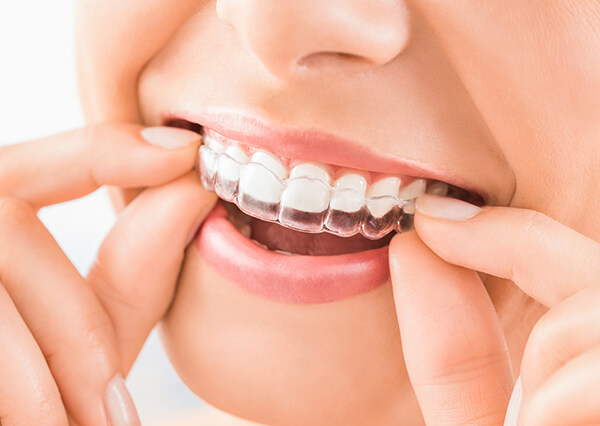Invisalign Dentist
How Does Invisalign Work?
Identification
Design
As your teeth move and shift during the stages of alignment, you’ll continue to go back to your dental professional’s office to essentially monitor the progress of your orthodontic treatment.
Though the doctor will have already charted out the course of your teeth, your checkups will essentially allow your doctor to gauge your progress and make any adjustments needed to the next set of aligners you’ll use to shift your teeth.
This form of treatment is completely customized for your mouth. It isn’t a cookie-cutter mode of care, and the devices cannot be used by anyone other than you. If you’re interested in Invisalign, you should talk to your dentist or orthodontist. While it is said to work on almost all dental issues, such as overbites, underbites and other orthodontic problems, your dental professional can determine whether Invisalign will work for you.

Invisalign Vs. Braces
The real difference between Invisalign and braces is two-fold. The first benefit is that the aligners are totally removable, making it easier to brush, floss and even eat without having to deal with those bracket and wires used in traditional braces. It can really make dental care a lot less complicated, allowing you to use a simple toothbrush, standard floss and maintain your normal diet (not having to eliminate harder food products that tend to break off the brackets of traditional braces). The second benefit is the comfort factor. While you may experience some soreness or tenderness within your teeth or jaw as the aligners shift the position of your teeth, you won’t experience any of the irritation inside the mouth that frequently takes place with traditional braces. The reason for this is that Invisalign is fairly smooth, so the insides of your mouth never rub or press into hard brackets.
Frequently Asked Questions (FAQ) About Invisalign (Invincible Dental Braces)
Invisalign is a type of orthodontic treatment that uses clear, removable aligners to straighten teeth. The aligners are custom-made for each patient and gradually move the teeth into place over time.
On average, most patients will need between 12 and 18 months to complete their treatment. However, this can vary depending on the severity of misalignment or crowding in the mouth. It’s best to speak with your dentist about your specific situation so you can get an accurate timeline for completion.
Generally speaking, yes—Invisalign tends to be more expensive than traditional braces because they require additional customization and engineering work compared with metal brackets and wires used in traditional braces. That said, many dental insurance plans cover some or all of the cost of both types of treatments so it’s best to check with your provider before making any decisions about which option is right for you financially.
No—it’s important not to eat or drink anything other than water while wearing your aligners as doing so could damage them or cause them to become warped and ineffective at moving teeth into proper alignment. If you do want something other than water while wearing your aligners, simply remove them first then brush and floss afterwards before putting them back on again.

